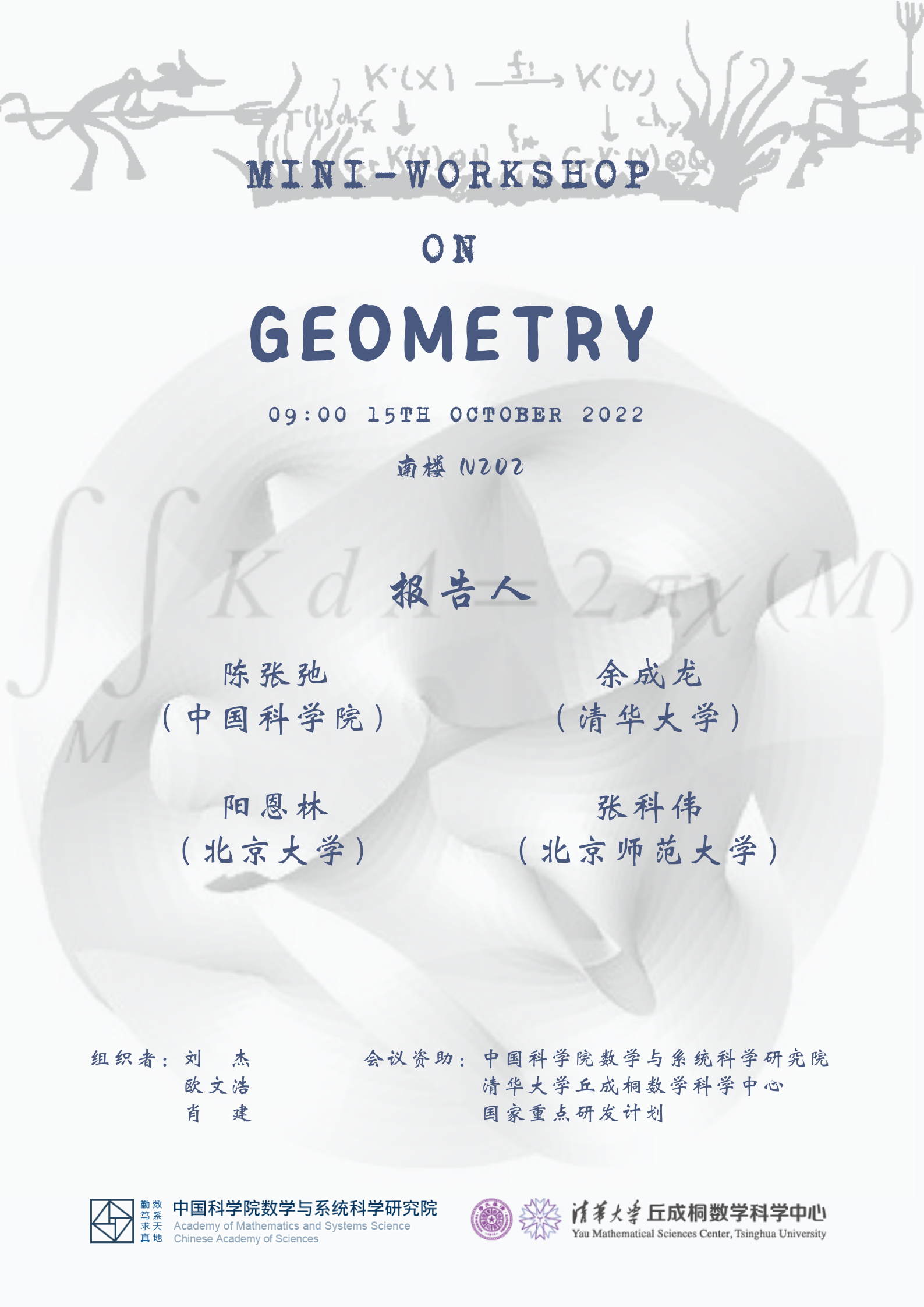Mini-workshop on geometry
| 会议主页 | |||||||||||||||||||||||||
| 会议地点 | 中国科学院数学与系统科学研究院南楼N202 | ||||||||||||||||||||||||
| 会议时间 | 2022年10月15日(星期六) | ||||||||||||||||||||||||
| 会议海报 | |||||||||||||||||||||||||
| 会议日程 |
|
||||||||||||||||||||||||
| 报告摘要 |
The problem of equivalence treats the determination of whether two mathematical objects are the same under certain change of variables.
In differential geometry, we study equivalence of differentiable objects under Lie group actions. Such objects includ/pe submanifolds,
vector fields, differential forms, PDE systems, metrics, variations etc. It has its applications in computer vision.
Equivalence classes are determined by differential invariants, which can be expressed as invariant functions of derivatives. In a well-posed equivalence problem there are infinitely many invariants of arbitrary large orders. But due to works of Tresse-Lie-Chern-Cartan, the algebra of all invariants is finitely generated. In this talk I will introduce a Fels-Olver's practical algorithm to calculate differential invariants, their generating relations and syzygies in the non-degenerate case, assuming some relative invariants are non-zero. Using their 'Recurrence formulas' I will show the finiteness of generators. As two examples, I will present my PhD work on developing a theory for degenerate cases, under finite (SA3) and infinite (biholomorphisms) dimensional Lie group actions.
The study of hypergeometric functions dates back to Euler and Riemann. The global monodromy groups arising from analytic continuations of those functions play
an important rule in their global properties. Many mathematicians including Fuchs, Schwarz, Picard, Pochhammer, Appell, Lauricella and Terada
studied the corresponding period integrals and higher dimensional generalizations. In 1980’s, Deligne and Mostow obtained discreteness and arithmeticity criteria
for those monodromy groups acting on complex hyperbolic balls. Thurston also gave another approach via flat conic metrics. On the other hand, the classification
of those groups up to conjugation and finite index (commensurability) is not completed. The dimension one case is the classical hyperbolic triangle groups and
solved by work of Greenberg, Petersson, Singerman and Takeuchi. There are some commensurability results on dimension two cases by Sauter and Deligne-Mostow.
In this talk, we will discuss some new results on commensurabilities among lattices in \(PU(1,n)\) for higher dimension n. The results rely on constructions of higher
dimensional varieties instead of analysis of complex reflection groups. This approach also gives new proofs for existing results in \(n=2\). This is joint work with
Zhiwei Zheng.
In this talk, we will sketch the construction of non-acyclicity classes for constructible sheaves on (not necessarily smooth) varieties, which is defined in a recent
joint work with Yigeng Zhao. This cohomological class is supported on the non-locally acyclic locus. As applications, we show that the Milnor formula and Bloch’s
conductor formula can be reformulated in terms of the functorial properties of non-acyclicity classes.
We first recall the classical history of the study of Kahler-Einstein type metrics and then discuss its relation with birational geometry that are recently intensively
investigated by algebraic geometers. Finally we show how this new birational viewpoint in turn affects the study of Kahler-Einstein type metrics.
|
||||||||||||||||||||||||
| 会议组织者 |
|
||||||||||||||||||||||||
| 会议资助 |
|
||||||||||||||||||||||||
